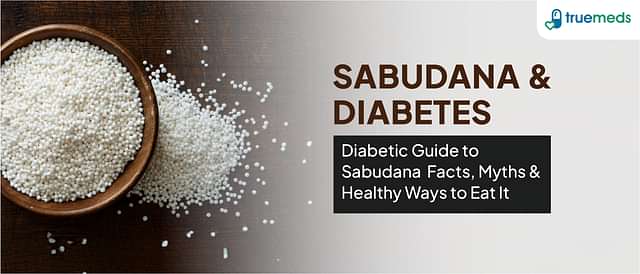Understanding Pyrexia: Causes, Symptoms, Diagnosis, Treatment, and Prevention
Last updated on : 23 Oct, 2024
Read time : 9 min
Introduction
Fever pyrexia is a common physiological reaction that your body exhibits when combating an underlying condition. Understanding pyrexia helps us identify its causes, symptoms, and treatments for effective health management. Let’s delve into the details of pyrexia and uncover its complexities in a simplified manner.
What is Pyrexia?
Pyrexia meaning fever is when your body temperature elevates above the normal range, usually around 98.6°F (37°C). Pyrexia is your body’s natural response to infection or inflammation; it can be low-grade, moderate, or high depending upon the extent of the temperature rise. Once you define pyrexia and familiarise yourself with common symptoms, you can better understand its probable causes, which might hint at underlying medical issues.
How Does The Body Temperature Rise?
Your body maintains a stable temperature through a mechanism controlled by the hypothalamus, which serves as the body’s thermostat. On detecting pathogens such as bacteria or viruses, your body releases substances known as pyrogens that stimulate an immune response. These pyrogens could be both internally produced or externally introduced.
As these pyrogens circulate in your bloodstream, they signal the hypothalamus to step up the body temperature creating an unfavorable environment for the pathogens and enhancing your immune response. This temperature rise is what we perceive as fever.
Causes of Pyrexia
The onset of pyrexia can be attributed to various causes which broadly fall into infectious and non-infectious categories.
1) Infectious Causes
Infectious causes triggering pyrexia often stem from viral, bacterial, or fungal infections. Common instances include influenza, pneumonia, urinary tract infections, and COVID-19. Your body’s immune response to these pathogens triggers fever as a defence mechanism, aiding in combating the infection. Pinpointing the specific infectious agent is pivotal for an effective treatment strategy.
2) Non-infectious Causes
Non-infectious factors leading to pyrexia may include inflammatory conditions like rheumatoid arthritis, heat exhaustion, or even certain cancers. In addition, medications, immunisations, or intense emotional stress can escalate your body temperature. Understanding these non-infectious triggers is indispensable for accurately diagnosing pyrexia and ensuring appropriate treatment.
Signs and Symptoms Associated with Fever
Various signs and symptoms may accompany a fever. They range from a heightened body temperature (the most common and obvious sign) to chills, sweating, headaches, muscle aches and fatigue. Some people may also experience loss of appetite and dehydration, or even become irritable.
In children, pyrexia can lead to additional symptoms such as fussiness or difficulty sleeping. It’s important to observe these signs closely as they can give us clues about the severity of the underlying condition and help guide the right treatment procedure.
Risk Factors for Pyrexia
Several factors can increase your chances of developing pyrexia. Age plays an important role; infants and young children are more susceptible to infections that can cause fever. Similarly, individuals with compromised immune systems, for instance, those with chronic illnesses or undergoing treatments that suppress their immunity, are at higher risk.
Certain environmental factors can also increase the risk: living in crowded or unsanitary conditions can make it easier for infectious diseases to spread. Changes in seasons, travelling to areas where certain diseases are prevalent, and exposure to vectors like mosquitoes can further enhance the risk of developing a fever.
Common Complications Associated with Pyrexia
Fever is generally a natural bodily response to an infection but if not managed properly, it can lead to complications. High fever, particularly in young children, can result in febrile seizures which are convulsions triggered by rapid rises in temperature. Prolonged fever may cause dehydration due to increased fluid loss through sweating and increased metabolic demands on the body.
In severe cases, persistent high fever could be indicative of serious underlying conditions such as sepsis or meningitis. These conditions require immediate medical attention. It is therefore crucial to keep monitoring fever and associated symptoms to prevent complications and ensure timely intervention when needed.
How to diagnose Pyrexia?
When it comes to diagnosing fever a comprehensive approach is necessary. This involves a thorough understanding of the patient’s medical history, an evaluation of their symptoms, and a complete physical examination. The first step in the diagnosis process is usually measuring the body temperature with a thermometer. A reading above 100.4°F (38°C) typically denotes a fever.
However, the diagnostic process doesn’t stop there. The doctor may order further tests based on what they suspect could be causing the fever. These tests could include blood tests, urine tests, imaging studies, or cultures to identify any infections. Evaluating the associated symptoms, duration of the fever, and any recent exposure to illnesses also provides essential clues.
Myth: Fever is always harmful and indicates a serious illness.
Fact: Fever is a natural immune response that helps the body fight infections. Most fevers, especially those between 100°F and 104°F (37.8°C – 40°C), are beneficial and not dangerous. They indicate that the body is working to eliminate pathogens effectively.
Treatment of Pyrexia
The treatment for pyrexia primarily focuses on managing the underlying cause while also easing discomforting symptoms. If the fever is mild, rest and hydration should be prioritised. Over-the-counter medications like acetaminophen or ibuprofen can also help reduce discomfort and lower fever.
However, if the fever is due to an infection, antibiotics or antiviral medications may be prescribed by your doctor based on the specific pathogen involved. It’s essential to keep a close eye on your fever and seek immediate medical attention if it persists for more than a few days without improvement or if it worsens. Also, if it’s accompanied by severe symptoms like intense headache or chest pain among others, do not hesitate to call your doctor; these could indicate a more serious condition requiring immediate medical care.
Foods That Can Help With Pyrexia
When you’re grappling with pyrexia or fever, what you eat can make a significant difference in your recovery process. Hydration is pivotal, so incorporating fluids like water, herbal teas, and broths in your diet helps replenish lost fluids and maintain hydration.
Foods rich in antioxidants can bolster the immune system; think of fruits and vegetables like berries, oranges, spinach, and carrots. Light, easily digestible foods such as oatmeal, bananas, and rice can be soothing and provide necessary energy without overwhelming your digestive system. Protein-rich foods like chicken soup or yoghurt can aid in recovery by supporting immune function.
Don’t forget the power of spices! Ginger and garlic have anti-inflammatory properties that may enhance recovery. Lastly, instead of having three large meals, aim for small, frequent meals to help maintain energy levels while managing fever symptoms.
First-aid for Pyrexia
The first thing to do is ensure the affected individual remains hydrated. This can be achieved by providing small, frequent sips of water or fluids that are rich in electrolytes. To help reduce body temperature, you can use a cool, damp cloth to gently wipe the person’s forehead, neck, and underarms. Also, dressing the person in lightweight clothing and ensuring the room temperature is comfortable can help manage pyrexia.
If the pyrexia is caused by the sun, get under a fan and spray your face with cool water. However, avoid using cold water and taking ice baths as they may cause shivering and inadvertently raise the body temperature. If pyrexia persists for more than a few days or is accompanied by severe symptoms, it is necessary to seek immediate medical attention.
Prevention of Pyrexia
Preventing pyrexia entails adopting healthy habits and precautions against infectious diseases. Good personal hygiene practices such as regular handwashing and covering the mouth during coughs and sneezes can significantly reduce the spread of germs.
Vaccinations are also a vital preventive measure; staying up-to-date with immunisations, especially for diseases like influenza and COVID-19, provides effective protection against common viral infections. Safe food handling and preparation procedures can prevent foodborne illnesses while using insect repellents and wearing protective clothing in areas with endemic diseases can minimise the risk of vector-borne infections. Adopting a balanced diet, regular exercise regimen, and effective stress management techniques can strengthen your immune system making your body more resilient against infections causing pyrexia.
Conclusion
Understanding pyrexia is crucial to maintaining one’s health and ensuring timely medical intervention if required. By recognising this condition’s causes, symptoms, and associated risk factors, you can take proactive steps towards its prevention and management.
While a fever is often a natural response to infection, persistent or severe cases require prompt medical attention to rule out serious underlying conditions and ensure the right treatment. Remember to seek medical advice when necessary, follow recommended treatments, and incorporate preventive measures to minimise the impact of pyrexia on your health and overall well-being.
FAQ
Pyrexia, commonly known as fever, originates from an increase in the body’s temperature set point, often triggered by infections, inflammation, or certain medications.
Preventing pyrexia involves maintaining good hygiene practices, getting regular vaccinations, and avoiding close contact with people suffering from infectious diseases.
Diagnosing pyrexia requires a physical examination by a doctor and usually a thermometer to measure the body’s temperature. Additional tests might be needed based on symptoms.
Pyrexia is a medical term for fever, indicating that the body’s temperature is higher than normal. It’s usually a response to infection or inflammation.
Disclaimer
Our healthcare experts have carefully reviewed and compiled the information presented here to ensure accuracy and trustworthiness. It is important to note that this information serves as a general overview of the topic and is for informational purposes only. It is not intended to diagnose, prevent, or cure any health problem. This page does not establish a doctor-patient relationship, nor does it replace the advice or consultation of a registered medical practitioner. We recommend seeking guidance from your registered medical practitioner for any questions or concerns regarding your medical condition.
Popular Articles
Recommended Articles
Recent Articles
Top-Selling Medicines:
...View more
Top-Selling OTC:
...View more
Subscribe
Registered Office Address
Grievance Officer
Download Truemeds

Contact Us
Our customer representative team is available 7 days a week from 9 am - 9 pm.
v3.7.5
Our Payment Partners



























































